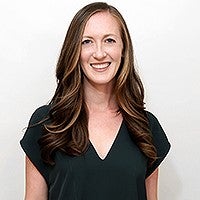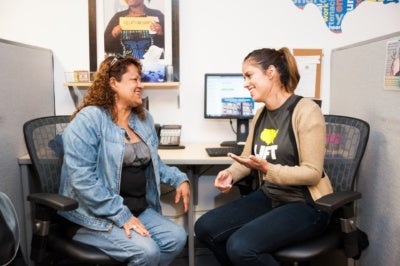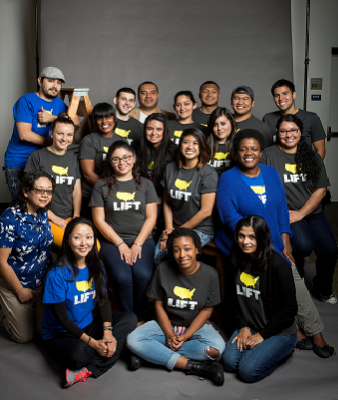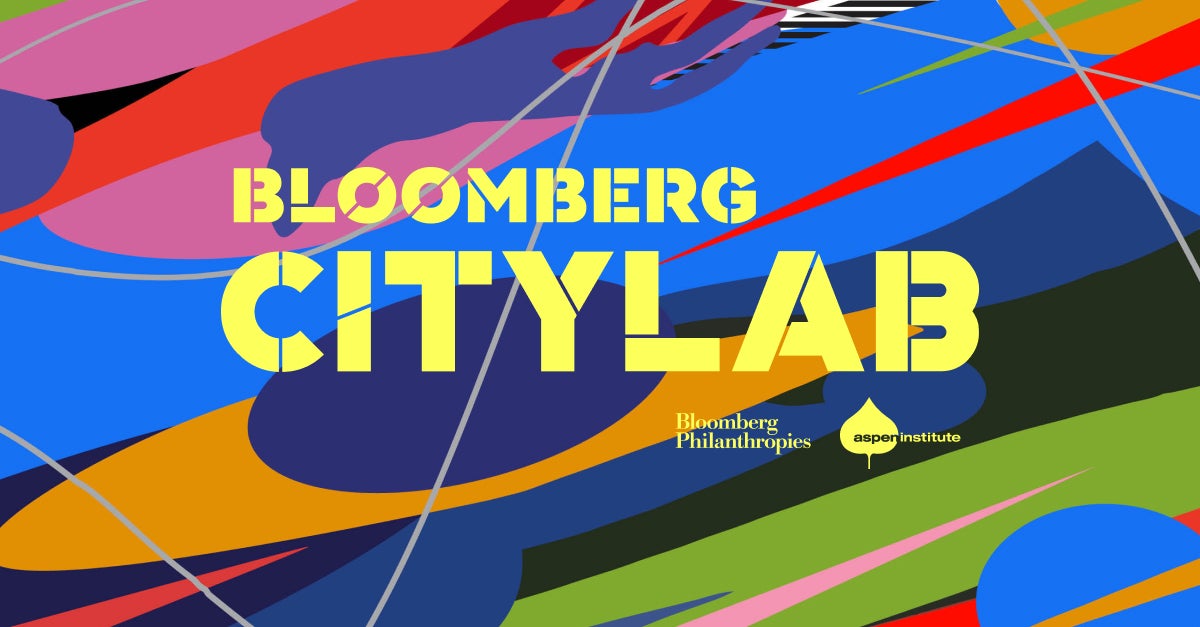Molly Day serves as Chief Strategy Officer for LIFT, a national nonprofit organization that works to break the cycle of poverty for families. Molly leads LIFT’s program, evaluation and systems change efforts.
This interview is part of the Aspen Institute Center for Urban Innovation’s series of conversations with inclusive innovation practitioners.
Jennifer Bradley: What does co-creation mean to you?
Molly Day: At LIFT, we take co-creation seriously. It’s embedded in our mission that how we do our work is just as important as what we do. For us co-creation is an ongoing partnership with our members, who are the families LIFT serves. It’s about listening to their aspirations and needs, then testing, based on what we heard, our own hypotheses for how we can support them, and then–I think this is the most important piece–actually delivering better services and support.

Molly Day, Chief Strategy Officer, LIFT
We have a core value at LIFT which is all parents should be treated as the CEOs of their families. That means they have the best solutions within themselves. Too often when we share this belief, it’s received in some rooms as revolutionary that families who are low income have the answers. That is a central belief in how we view co-creation.
It’s been more than 50 years after the start of the war on poverty, and we’re still pretty far from winning the war. If we listen to and engage those in our society who we are trying to help, we’d get to the right answers faster. We believe a central flaw over the last several decades has been not listening and engaging and co-creating enough.
JB: How does co-creation apply to LIFT’s practice?
MD: We use a proprietary tool called constituent voice to co-create our programs. It is a feedback system that solicits responses from our members after every engagement with LIFT. We’re looking at the value of the services we provide and whether they are aligned with parents’ needs. In short, the goal of this approach is to test things that are of interest to our members and improve our program accordingly. So we’re looking at quality: Do our parents feel that our meetings are productive and valuable? We’re looking at accessibility: How convenient is the location, schedule, and format of our meetings? And we’re also looking at community: How effective are we in creating that for our families?
If you are a LIFT member who comes in to meet with one of our coaches, you have your meeting, you work on your goals, and at the end of the meeting, our coach escorts you to the front of a LIFT office where you sign in on an iPad touch screen and do a two-minute survey to give us feedback. We have a set of rotating questions that allow us to gather data in real time on how our members are experiencing our program. The data gives us a helpful place to start a conversation with our members. It lets us know if we’re doing something our members don’t like, and then the onus is on us to have real conversations directly with members, often through focus groups, to figure out what’s not working and what could be better.
We’ve used our constituent voice feedback system in powerful ways to reorient our entire program model. Some pretty significant changes have come from it– like new investments in activities that connect our parents with other parents through peer groups and social events, or adding the option of phone meetings and co-locating with early childhood providers to make LIFT’s services more accessible. Going forward, we’d like to take things further by figuring out how we can position our members to not only give us feedback but to deliver our program directly. We’re trying to push the boundaries, most notably in Chicago this year, by opening up leadership roles for our members to work for LIFT and work on behalf of families in their own community. I think that’s just the tip of the iceberg for us.
JB: What are some of the challenges that come with this commitment to co-creation?
MD: To do co-creation right will require changing behavior, and that is a fundamentally tough thing for human beings to do because it means you will lose some things that you feel attached to doing or even things that feel close to your identity. That applies to senior level staff. It applies to front line staff and also to members who are experiencing LIFT’s programs.
Organizations who want to invest in co-creation really need to think long and hard about change management and then very intentionally put trainings and supports in place to help people go through that on a day to day basis.
Then there are things that are more operational, like survey fatigue. At every meeting a member gets that survey. It’s a lot of questions. How is this a practice that does not feel extractive, but rather is something where members can see that their feedback is used and is valuable?

Courtesy of LIFT
We’ve now added a screenshot that reports back to members on the questions we’ve asked in the prior six months, what members have told us, and what we’ve done at LIFT to change our behavior. Members can see right there on the iPad that their feedback matters. We’ve just rolled this out [in December 2017], so we’ll see what members think, if they like seeing the feedback loop closed right then and there.
JB: What would you tell an organization that said, “Okay, we want to start on this path to co-create with the people we’re trying to serve?”

Courtesy of LIFT
MD: The organization has to have real buy-in at the top, otherwise it can very easily become additional data you’re collecting that you’re not doing much about, and then you’re wasting people’s time. You need buy-in on the front lines, too, because they’re the folks who need to nudge members in every meeting to complete that survey. And, perhaps more importantly, how do frontline program staff see this tool as a way for them to learn and change and do even better?
In the last six months, LIFT has been actively engaged in an ongoing conversation around diversity, equity, and inclusion, and this connects directly to our constituent voice work. When it comes to co-creation, the practice challenges the status quo because it insists that everyone’s voice matters. If you’re affected by something, you have the most important voice at the table when it comes to shaping the solution. I think co-creation should drum up some important dialogue around diversity, equity, and inclusion. Ultimately, for organizations in the business of making the world a better place, we must first push ourselves to live out that better version of the world so that we’re prepared to challenge the status quo and bust up forms of systemic oppression out in the world around us.
JB: What are the values that underlie co-creation?
MD: Deep trust and respect are critical. Program staff at LIFT would not have grasped onto co-creation as we have if it was just another evaluation practice. It feels like a manifestation of our mission. We are demonstrating what’s possible through co-creation, and we really want to demonstrate to the broader system that we believe we’re getting to better outcomes with our families based on how we do this work, which is engaging families from the get-go and in an ongoing way to continuously improve.
One of our big, bold aspirations is to make an impact on the human services sector and beyond about what it looks like to engage members in a dignified, respectful, and truly equal way in the process of creating solutions that are going to free everyone and make our communities better.
This interview has been edited and condensed for clarity.
This blog series is supported by the Citi Foundation, a vital early supporter of the Center for Urban Innovation at the Aspen Institute. With the Citi Foundation’s help, the Center convened leading-edge practitioners to develop a shared set of principles to guide a cross-sector approach to inclusive innovation in low- and middle-income neighborhoods, and to determine how the Aspen Institute could support this practice.

